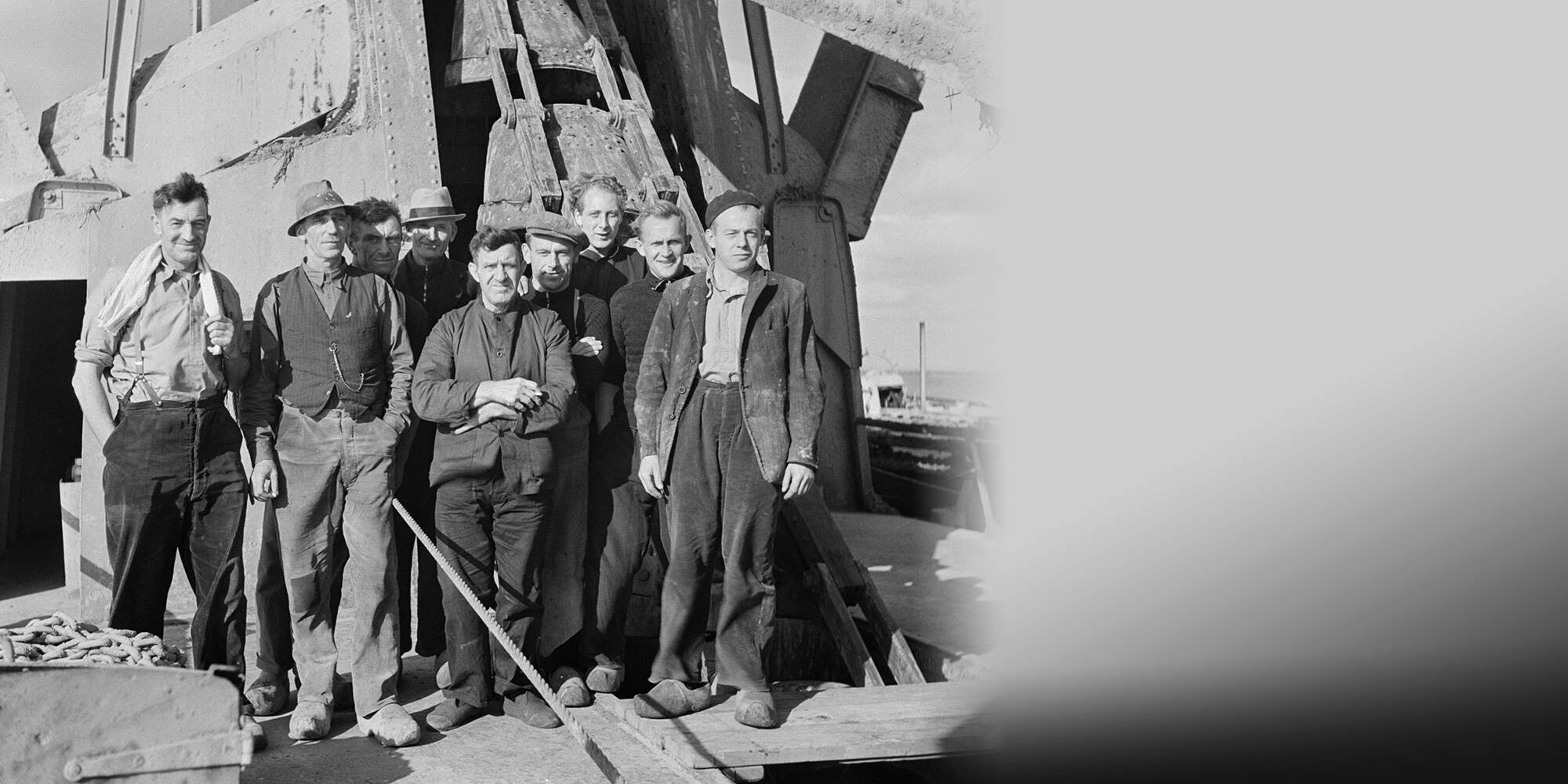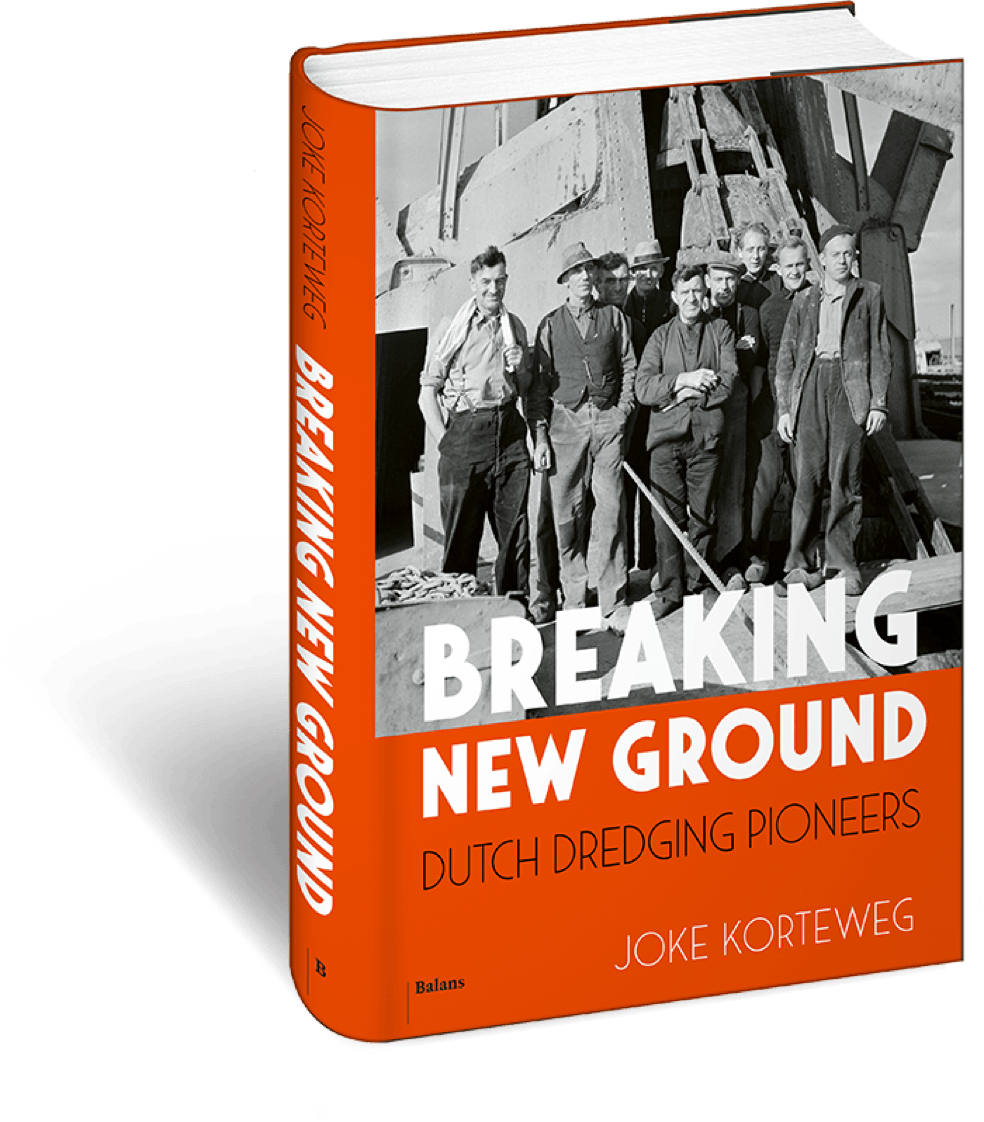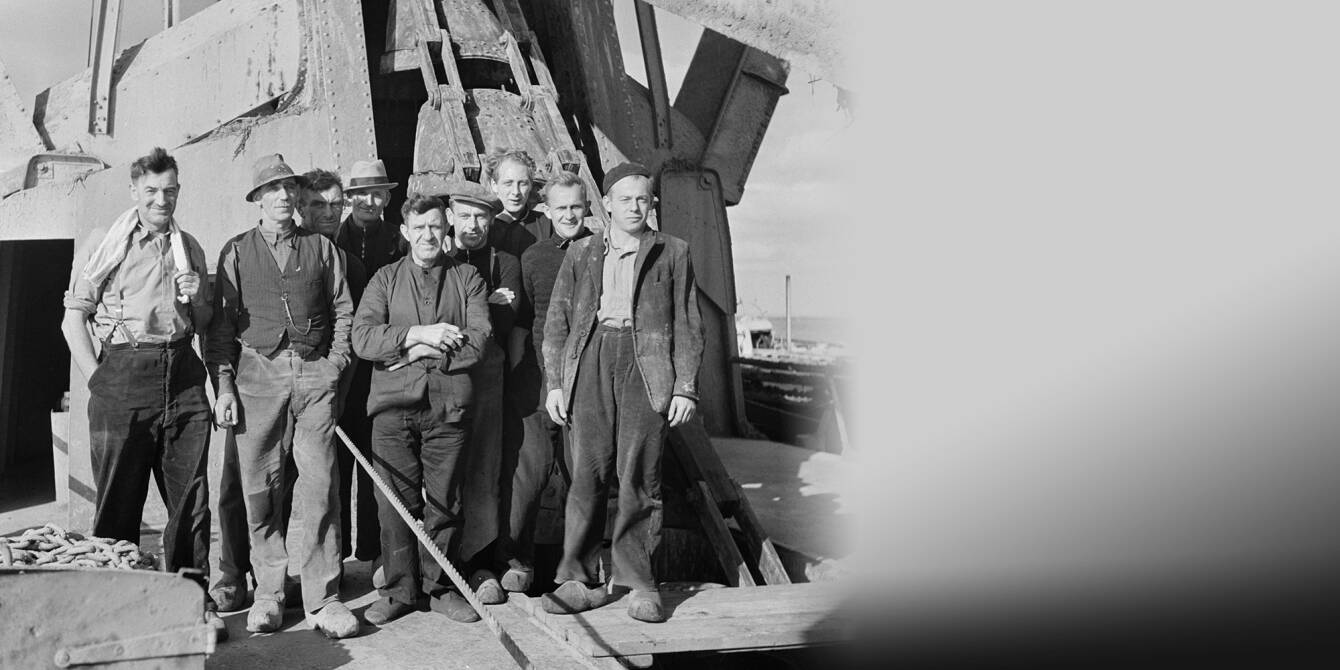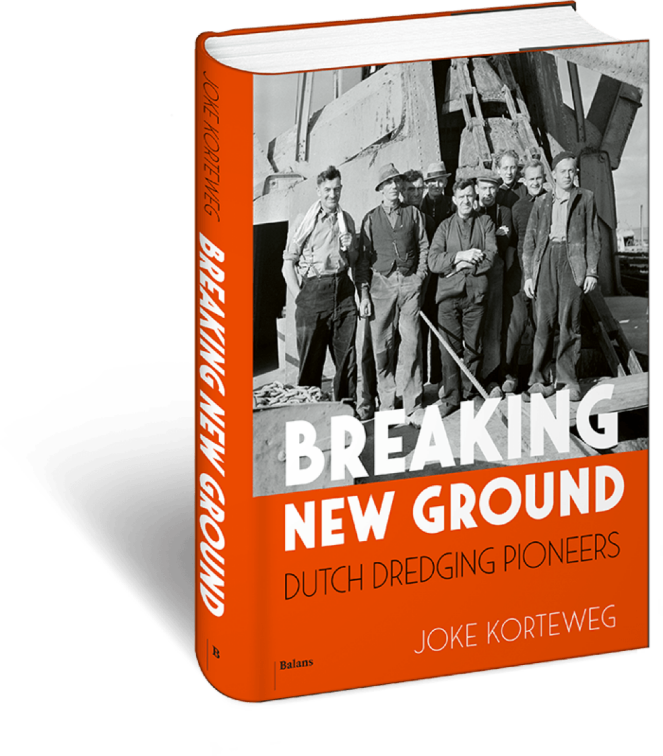© Nationaal Archief
In 2013, maritime historian Joke Korteweg was asked to map the history of Van Oord and its legal predecessors. ‘The result of many mergers, Van Oord has a wealth of material about the history of marine engineering.’
A book about 150 years of dredging history
Book


The book will be available end of November 2018.
Find your copy at your favourite (Dutch) bookstore.
of 150 years of dredging history in the Netherlands. Each chapter ends with a biography of a key figure who played an important role in the dredging sector.
The official book launch of ‘Breaking new ground’ by Joke Korteweg will take place on 23 November 2018 during an international conference in Rotterdam, the Netherlands. Its 325 pages present a chronological overview

though they could use that knowledge for their future. If the Research & Development department comes up with a new idea, that idea may well have been developed years ago. With today’s advanced means of technology it could become successful. I realise of course that companies must focus on the future. Learning a few lessons from history might help doing that.’
More than just a collection of dates
The history of a company is more than just a collection of dates, according to Joke Korteweg. ‘It does offer added value when a company actively studies its past. Many companies don’t know their own history, even
Joke Korteweg
The Nieuwe Waterweg Canal and the Moerdijk bridge were large projects, not only in 1868. They would also be if they would be executed now.

when the Nieuwe Waterweg Canal was dug, and when Adriaan Volker began to build the Moerdijk bridge. The Moerdijk bridge was a real feat of engineering. The pillars of the bridge had to be driven 12 to 14 metres deep into the bottom of the Hollands Diep waterway to support the railway bridge. The Nieuwe Waterweg Canal and the Moerdijk bridge were large projects, not only in 1868. They would also be if they would be executed now.’
How it all began
‘This book had to be about more than just the corporate history of family-owned marine contractor Van Oord. Each of its legal predecessors has its own specific history. They include Adriaan Volker, HAM, Amsterdamse Ballast Maatschappij and Broekhoven. Together they represent the rich history of the dredging industry. Van Oord and its predecessors have been dredging for about 150 years. I took the year 1868 as a starting point. This was the year when Govert van Oord began his contracting business,
Joke Korteweg is a maritime historian. Previously, she published Kaperbloed en koopmansgeest, 70 years of IHC Merwede and Nederlandse scheepsbouw.
About the author

‘I started by going through Van Oord’s archives. The sheer volume was overwhelming and it was often difficult to interpret the material. Mergers were an ideal moment to clean out the archives, so a great deal of material is either incomplete or has been lost completely. Once I had a rough overview, which was in 2014, Van Oord asked me to write a book about the history of the dredging industry.’



© Nationaal Archief
In 2013, maritime historian Joke Korteweg was asked to map the history of Van Oord and its legal predecessors. ‘The result of many mergers, Van Oord has a wealth of material about the history of marine engineering.’
A book about 150 years of dredging history
Book

The book will be available end of November 2018. Find your copy at your favourite (Dutch) bookstore.
The official book launch of ‘Breaking new ground’ by Joke Korteweg will take place on 23 November 2018 during an international conference in Rotterdam, the Netherlands. Its 325 pages present a chronological overview of 150 years of dredging history in the Netherlands. Each chapter ends with a biography of a key figure who played an important role in the dredging sector.

Joke Korteweg
The Nieuwe Waterweg Canal and the Moerdijk bridge were large projects, not only in 1868. They would also be if they would be executed now.
More than just a collection of dates
The history of a company is more than just a collection of dates, according to Joke Korteweg. ‘It does offer added value when a company actively studies its past. Many companies don’t know their own history, even though they could use that knowledge for their future. If the Research & Development department comes up with a new idea, that idea may well have been developed years ago. With today’s advanced means of technology it could become successful. I realise of course that companies must focus on the future. Learning a few lessons from history might help doing that.’
About the author
Joke Korteweg is a maritime historian. Previously, she published Kaperbloed en koopmansgeest, 70 years of IHC Merwede and Nederlandse scheepsbouw.

How it all began
‘This book had to be about more than just the corporate history of family-owned marine contractor Van Oord. Each of its legal predecessors has its own specific history. They include Adriaan Volker, HAM, Amsterdamse Ballast Maatschappij and Broekhoven. Together they represent the rich history of the dredging industry. Van Oord and its predecessors have been dredging for about 150 years. I took the year 1868 as a starting point. This was the year when Govert van Oord began his contracting business, when the Nieuwe Waterweg Canal was dug, and when Adriaan Volker began to build the Moerdijk bridge. The Moerdijk bridge was a real feat of engineering. The pillars of the bridge had to be driven 12 to 14 metres deep into the bottom of the Hollands Diep waterway to support the railway bridge. The Nieuwe Waterweg Canal and the Moerdijk bridge were large projects, not only in 1868. They would also be if they would be executed now.’
‘I started by going through Van Oord’s archives. The sheer volume was overwhelming and it was often difficult to interpret the material. Mergers were an ideal moment to clean out the archives, so a great deal of material is either incomplete or has been lost completely. Once I had a rough overview, which was in 2014, Van Oord asked me to write a book about the history of the dredging industry.’